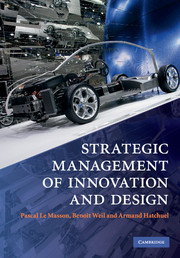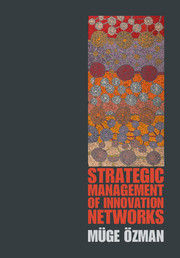Strategic Management of Innovation and Design
There is now widespread agreement that innovation holds the key to future economic and social prosperity in developed countries. Experts studying contemporary capitalism also agree that the battle against unemployment and relocations can only be won through innovation. But what kind of innovation is required and what is the best way to manage, steer and organize it? Grounded on experiences of innovative firms and based on recent design theories, this book argues that instead of relying on traditional R&D and project management techniques, the strategic management of innovation must be based on innovative design activities. It analyses and explains new management principles and techniques that deal with these activities, including innovation fields, lineages, C-K (Concept-Knowledge) diagrams and design spaces. The book is ideal for advanced courses in innovation management in industrial design schools, business schools, engineering schools, as well as managers looking to improve their practice.
- Establishes new framework for continuous innovation in the firm
- Original and extended case studies, closely linked to the development of theory
- Comprehensive literature review, highlighting contributions and limitations of past approaches
Reviews & endorsements
"This timely study proposes an important new perspective on strategic management grounded in both empirical work and in the theory of design. It integrates research on knowledge and creative thinking to develop a radically different approach to the current challenges facing both managers and management researchers." - Ken Starkey, Professor of Management and Organisational Learning, Nottingham University Business School
Product details
November 2010Paperback
9780521182430
488 pages
244 × 170 × 25 mm
0.77kg
57 b/w illus. 19 tables
Available
Table of Contents
- List of figures
- List of tables
- List of cases
- Preface 1 Paul Rivier
- Preface 2 Marc Maurer
- Introduction: from R&D to RID
- Part I. From Innovation to Innovative Design:
- 1. What do we know about innovation? Testing the economic and social sciences
- 2. Management sciences and innovation: identity of objects and innovation capability
- 3. The design activity and innovation capability
- Part II. Design Capacities in Innovative Firms:
- 4. Highly innovative firms: Tefal 1974–97 - the Wizards of Rumilly
- 5. A model of the innovative firm: design strategy, metabolism and growth regime
- 6. Grafting the Tefal model: astonishing performance from an innovative start-up
- Part III. Rebuilding Innovation Capabilities:
- 7. Large firms and intensive innovation: the recurring R&D crises
- 8. From R&D to RID: missions and organizations of innovative design
- 9. Learning from experience: expansions from the innovative windscreen at Saint-Gobain Sekurit
- Part IV. Innovative Design: Tools and Organizations:
- 10. The methodologies of innovative design: C-K theory, innovation fields and design spaces
- 11. Type 1 innovation fields: design in the search for new values - the innovative forms of user-involvement
- 12. Type 2 innovation fields: design by drastic technological change and by regenerating functions
- 13. Type 3 innovation fields: combining scientific research and conceptual innovation
- 14. The inevitable return to rule-based design
- 15. Innovative design, platforms and open innovation: the management of exploratory partnerships
- Conclusion: the governance of innovative design, a third era of modern management?
- Bibliographical appendix. Innovation viewed by the different disciplines: an extended survey
- Postface Jacques Lacambre and Dominique Levent
- Innovative design glossary
- Bibliography
- Index.




